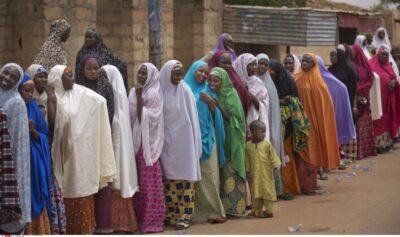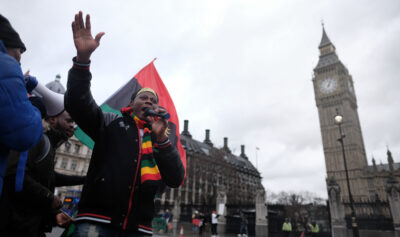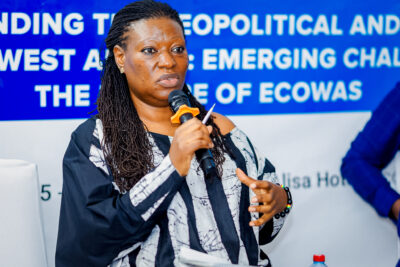The construction of space constitutes one of the primary ways through which religions create templates for behavior. As they construct their physical spaces, religions create models of the ideal, places within which adherents can visualize and enact religious principles in a concrete way. Anthropologists have often discussed this process in terms of sacred space—edifices such as temples, churches, synagogues, and mosques can be seen as spatial embodiments of religious ideas, allowing worshipers to physically act out what are ordinarily abstract notions. Communal religions often extend this to the space of daily living, constructing living spaces, workplaces, and communal spaces that mimic those of the ideal world, allowing members to approximate in this dimension the virtues that will be fully realized in the world to come. Anthropologists have written extensively about this process, examining the construction of space in religious organizations ranging from churches to monasteries to ethnoreligious enclaves.
Latest posts
Short skirts and niqab bans: On sexuality and the secular body
by Jennifer A. Selby and Mayanthi L. FernandoIntroduced in Québec in March 2010, Bill 94 proposed requiring women to unveil their faces if they wanted to work in the public sector or access public services, including hospitals, universities, and public transportation. The bill was eventually tabled and was followed in November 2013 with Bill 60, which demanded in more generalist language the removal of conspicuous religious signs in order to dispense or use public services in the province. These Québécois bills—which have not passed—echo the logic of the April 2011 French law targeting the niqab (face veil) and banning the “dissimulation of the face” in public spaces. Both French and Québécois proponents of these laws cited gender equality and women’s emancipation—which they deemed foundational to French and Québécois values—as their primary goal. Despite Québec’s long insistence that it espouses a third path between Canadian multiculturalism and the French Jacobin model, Québec and France have increasingly converged to promote a model of secularism in which liberty and equality are articulated as sexual liberty and sexual equality. In fact, these niqab restrictions represent a broader secular-liberal discourse—what Joan W. Scott calls “sexularism”—that posits secularism as the best guarantor of women’s sexual freedom and sexual equality and, therefore, as that which distinguishes the West from the woman-oppressing rest, especially from Islam.
Faith in the nation: Nigerian publics and their religions
by Rudolf P. GaudioThe cityscape of Abuja, the capital of Nigeria, is dominated by two houses of worship known as the National Mosque and the National Church. Facing each other in the heart of the city, these impressive architectural monuments symbolize the crucial place of organized religion in the postcolonial Nigerian state’s efforts at forging a unified national public. The national population of 160 million is notoriously heterogeneous, comprising hundreds of languages, ethnicities, and so-called “traditional” religious and political institutions. For political and rhetorical expediency, this diversity is often reduced to the country’s 36 states, 6 geopolitical zones, and 3 majority languages (plus English). But the Muslim/Christian dichotomy is arguably the central organizing trope in contemporary discourses of Nigerian nationhood.
Islamism beyond the Muslim Brotherhood
by Yasmin MollA few weeks after the ouster of Egyptian president Mohamed Morsi in 2013, the New York Times ran this headline: “Egyptian Liberals Embrace the Military, Brooking No Dissent.” The accompanying photograph showed a man with a full beard and shaved moustache in the Salafi style, a prominent prayer mark (a “raisin” in the Egyptian vernacular) on his forehead. Behind the man is a wallpaper of Muslim pilgrims circumambulating the Kaaba in Mecca. A framed portrait of then-general and coup master Abdel Fattah el-Sisi leans against beige tiles stickered with several Qur’anic verses. The headline limits the military’s support base to (secular) liberals, while the image shows us it actually extends beyond this narrow stratum.
What kind of territory? On public religion and space in Ethiopia
by Tom BoylstonEthiopian Prime Minister Meles Zenawi died shortly before the 2012 Meskel festival, the Finding of the True Cross—one of the major festivals of the Ethiopian Orthodox Church. Its public centerpiece is the burning of a great bonfire in Addis Ababa’s Meskel Square, which takes its name from the occasion. State television broadcasts the ceremony every year, and the 2012 broadcast (2005 by the Ethiopian calendar) can be found on YouTube. The festival revolves around the bonfire, recalling the smoke that led Constantine’s mother Saint Helena to the recovery of Christ’s cross. On this occasion a kitsch re-enactment of the story precedes the lighting of the fire, as Helena and her entourage parade the cross, decked with fairy lights, on a carnival float [4:50-5:20]. Overlooking the whole event, and clearly visible as the fire burns, are several billboards depicting the recently deceased Prime Minister. One reads: “We will keep our word and fulfill your vision.” The religious connotations of the Ge’ez word ra’iy, "vision," are presumably intentional.
White House announces new women’s healthcare rules
by Candace E. WestIn the wake of this summer's Hobby Lobby decision and Wheaton College order, the White House has announced a new regulation designed to reconcile recent accommodations for nonprofits and closely-held for-profits with the requirements of the Affordable Care Act.















